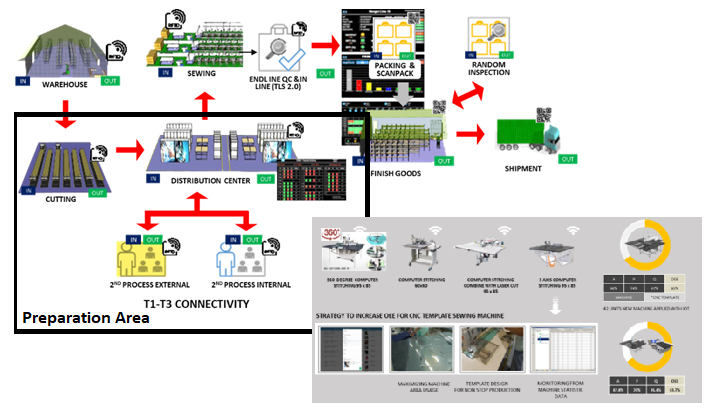The effectiveness of using RFID and IoT in digital transformation processes in garment companies using the UTAUT model2
DOI:
https://doi.org/10.31943/gw.v14i2.511Keywords:
RFID, IoT, Garment, UTAUT2, EffectivitiesAbstract
This study aims to analyze the effectiveness of using RFID and IoT in the digital transformation process in a garment company using the UTAUT2 model. This research is necessary because it can influence the intentions and behavior of its users to increase production effectiveness. A quantitative approach uses the survey method used in this study to achieve the research objectives. The number of respondents in this study was 193 employees who worked in the preparation area. The data collected from the questionnaire results were analyzed using inferential statistics. The study results show that employee acceptance of using RFID and IoT in the digital transformation process gets a positive response. Each variable average value used is in the value range 3.79 – 4.44 (scale 1 to 5). In addition, it was found that Performance Expectancy, Effort Expectation, and Price Value positively influenced Behavioral Intention. In contrast, Habit and Behavioral Intention positively influenced Use Behavioral. As for the Social Influence and Hedonic Motivation variables on Behavioral Intentions and the Facilitating Conditions variable on Usage Behavior, no positive effect was found.
Downloads

Downloads
Published
How to Cite
Issue
Section
License
Copyright (c) 2023 Thedjo Sentoso, Kusrini, Hanafi

This work is licensed under a Creative Commons Attribution 4.0 International License.
The use of non-commercial articles will be governed by the Creative Commons Attribution license as currently approved at http://creativecommons.org/licenses/by/4.0/. This license allows users to (1) Share (copy and redistribute the material in any medium) or format; (2) Adapt (remix, transform, and build upon the material), for any purpose, even commercially.









